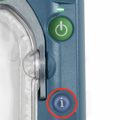Do AEDs Expire?
Sudden Cardiac Arrest (SCA) claims thousands of lives annually in the United States alone. In these critical moments, the prompt administration of CPR and immediate use of an Automated External Defibrillator (AED) can dramatically improve survival rates. Ensuring that your AED is always in prime working condition is not just a matter of compliance, it’s in ensuring overall emergency preparedness and safety in your facility.
How Long Do AEDs Last?
The longevity of your AED significantly depends on its care and usage. New AED units have a potential lifespan of 8-10 years from the date of manufacture. Factors such as usage frequency and storage conditions play a crucial role in reaching that lifespan. For instance, an AED kept in an office or storage cabinet and rarely used will likely outlast one placed in the trunk of a police vehicle due to the difference in environment and exposure to harsh conditions. After an AED has reached the end of its lifespan it is important to replace it with a new unit to ensure that it is able to properly function should it be needed in an emergency.
AED PAD AND BATTERY EXPIRATION
The primary maintenance oversight with AEDs involves not replacing the pads and batteries before they expire. Typically, these components are viable for 2-5 years, varying by unit. It is important to ensure that both pads and batteries are up to date for your unit as they can affect pad adhesion and the ability to deliver a life saving shock. To guarantee proper maintenance, recording and tracking their expiration dates is essential for uninterrupted AED performance. There are available AED Maintenance Programs to help notify you when maintenance is required.

The Zoll AED Plus and Defibtech Lifeline units have maintenance indicators
How to tell if your AED needs to be replaced?
AEDs are engineered to conduct automatic self-tests to ensure their functionality. Should any of these tests fail or detect a problem, the AED will emit a beeping sound signaling the need for servicing. Some AED models are equipped with an information button, providing detailed explanations for what needs to be serviced, like replacing the electrode pads or battery.
Philips HeartStart OnSite AED Information Button
Regular physical inspections are equally important to confirm the AED’s readiness. Just because there is no audible indicator that something is wrong with your unit does not ensure your AED is fully operational. Look out for any dirt, damage, and expiration dates that could affect functionality. Even if there are no audible alerts, a physical inspection may reveal operation issues or other concerns.
An AED is a critical component of your facility’s safety program. Understanding and adhering to proper maintenance schedules, recognizing the signs of wear, and promptly addressing any issues ensures that your AED remains reliable in the event of a cardiac emergency. At AED Professionals, we’re committed to helping you stay prepared with top-tier quality, expertise, and comprehensive customer support. View our product offerings or if you have any questions contact our team and we will be happy to assist you.




